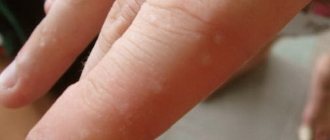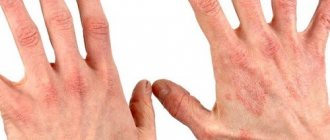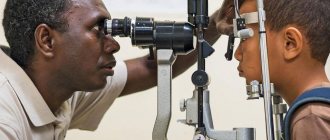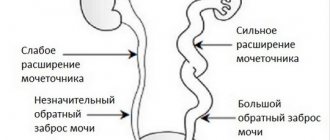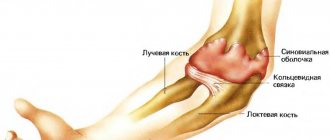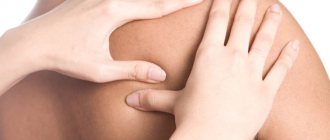What is a boil
Boils or boils are dense, round abscesses that sometimes swell on the surface of the skin.
It doesn't look pleasant. Something like this (options of other sizes and degrees of redness of the epidermis around are possible):
medicalnewstoday.com
It feels even more unpleasant. Unlike a regular pimple, which at first can be confused with a developing abscess, a boil hurts, and the skin next to it looks inflamed and often has an elevated temperature. And in general, this is logical if you understand where the nasty stuff comes from.
Possible consequences and complications
Isolated and rare cases of furunculosis with proper treatment go away without any special consequences for the patient. A disease with frequent relapses poses a health hazard and the likelihood of complications.
Improper treatment of a boil located on the face can lead to dangerous consequences:
- the formation of edema;
- increased tissue temperature in the area of inflammation and in the body as a whole;
- vision problems;
- sepsis;
- meningitis;
- deterioration of general condition.
Localization of boils in the area of large vessels and the spread of infection to them threatens the development of acute thrombophlebitis, inflammation and painful swelling of the veins. A purulent abscess near the lymph nodes can cause lymphangitis or regional lymphadenitis.
Furunculosis is a serious disease that requires a special approach to treatment. Lack of therapy can lead to serious complications, prolongation of recovery, and the formation of defects and scars on the skin.
Find out more on the topic: Skin, nails, hair
Why do boils appear?
The bacteria Boils - Treatments, Causes, and Symptoms, more precisely staphylococci, are to blame for everything. They live on the skin of each of us and in most cases do not cause much trouble. However, under certain conditions, a violation of the peace treaty is possible.
With injuries, mechanical damage (for example, constant friction) or decreased skin immunity (it is caused by a variety of reasons: from vitamin deficiency to diabetes), staphylococci can penetrate the skin. Specifically, the hair follicle is the sac from which hairs grow.
Inflammation develops in the hair follicle, so there is always hair in the center of the boil.
In response to aggression, the body sends leukocytes—white blood cells—to the same pouch, whose task is to absorb and digest insolent microbes. By destroying the infection, the leukocytes themselves die - this is how pus is formed.
When dying, defenders release substances that cause a local inflammatory reaction. Therefore, the skin around the battlefield swells, turns red and becomes hot.
Redness and soreness persist until the boil opens and empties. The stages of this process look something like this:
Stages of the disease
At the initial stage of boil development, inflammation of the follicle begins. This area of skin begins to thicken (boil in the infiltration stage) and becomes bright red. It has rather blurred boundaries. There are sensations of pain and slight tingling in the affected area of the skin. The more the chiryak grows, the greater the compaction becomes. It begins to expand, and the surrounding tissues swell.
The second stage of boil development occurs on the third to fifth day after the appearance of the first symptoms. A characteristic feature is the increase in chiryak to 2-4 cm in diameter. A purulent core of dead tissue appears in the center of the inflamed area. There is a pustule on the surface of the shaft.
In addition to the hair follicle, rotting of the sweat gland begins, as well as adjacent connective tissues. The vessels in the area affected by the pathology begin to expand. The halogen swells greatly. The shape of the chiryak becomes cone-shaped. Inside the cone, elastic as well as collagen bonds break. The accumulation of collagen fibers creates a special ring inside the chiryak, which prevents the infection from spreading in the body. It is important not to squeeze out the boil if there is no understanding of the possible consequences. The autopsy must be done correctly.
The inflamed skin takes on a blue tint and becomes completely smooth. At this stage, the pain begins to intensify. If the body is severely damaged by infection (a lot of boils appear), then signs of intoxication may appear. Main symptoms:
- Severe nausea.
- General weakness of the body.
- Malaise.
- Complete absence or deterioration of appetite.
- Headache.
- Body temperature is within 37.5−38 degrees.
The end of the second stage of chiryak development is its opening. It can be either artificial or spontaneous. In this case, a huge amount of purulent contents is released. The main necrotic core in furunculosis looks like a yellowish purulent stick. In rare cases, large amounts of blood may be released.
With furunculosis at the third stage, a small abscess appears at the site of the opened skin. It begins to gradually fill with granulations. After a few days, complete scarring occurs. At first the scar is red, but gradually it becomes lighter. After some time, the scar is almost invisible.
The full cycle of this skin disease is often quite vague. Sometimes only an infiltrate forms. In this case, there is no pus or necrotic formations. In other cases, with weak immunity, furunculosis can acquire an extensive form.
Why is a boil dangerous?
The hair follicle is closely connected with blood vessels. If you damage them carelessly (for example, by trying to squeeze out pus from an immature boil, where leukocytes have not yet defeated the microbes), bacteria can enter the bloodstream. And this is fraught with blood poisoning.
Together with the blood, microbes enter the internal organs, which is why they begin to malfunction.
Boils on the face, neck or scalp are especially dangerous in this regard. The infection quickly enters the brain and can lead to meningitis, cerebral vein thrombosis and other extremely unpleasant conditions.
Types, localization and forms of manifestation of chiriev
Regardless of the reasons, a boil causes a lot of trouble for the owner and requires comprehensive treatment. It can be a small pimple or a large, swollen, egg-sized lesion. It can jump up on the body in places with hair, areas of the skin that are subject to frequent friction with clothing items. The risk zone includes the armpits, neck, chest, and intimate parts of men and women. There are many reasons for the formation of inflammatory lesions on the face.
Depending on the location of the boil on the body, it has the following varieties:
- A common chiryak is an inflammation of one hair follicle that pops up singly.
- Carbuncle. The reason for the development of this type is a severe inflammatory process of several hair follicles located nearby. A scattering of boils on the body merges into one large pathological focus. At the same time, several rods are opened, pus flows out in different places, which complicates the course of the disease. Treatment at home is unacceptable.
- Pilonidal sinus is a dangerous type of boil that develops in the coccyx area. The disease will spread quickly when purulent contents are released, which complicates treatment. With such rashes on the body, a visit to the hospital is mandatory.
- Hidradenitis suppurativa is numerous abscesses that do not have a core. They develop due to inflammation of the sweat glands in the groin and armpits. They can only be treated surgically.
Boils on the body go through several stages of development, the main thing is not to delay treatment. If a small abscess appears, it is advisable to take the necessary measures - seek help from a doctor. Ignoring the inflammatory process can cause the infection to spread to other tissues, developing furunculosis, which can develop into a chronic form.
Often, abscesses on the body, especially on the face, become a factor in the development and cause of sepsis, which can be fatal.
How to treat a boil at home
Nothing better. If you have a boil, the most thoughtful solution would be to go to a doctor - a therapist, dermatologist or surgeon. The specialist will examine the abscess, assess its location and size, analyze your state of health and, based on the results, give recommendations on how best to treat the boil specifically for you. These are the recommendations that you will need to diligently follow at home.
If you have not yet seen a doctor, home treatment can only consist of the following Boils - Treatments, Causes, and Symptoms:
- Use warm compresses. They will help reduce pain and speed up the maturation of the boil. Gently apply gauze soaked in warm water 3-4 times a day for 15 minutes.
- Apply antiseptic ointments with a pulling effect to the boil: ichthyol, heparin, synthomycin (which one to choose, it is better to consult a doctor)
Under no circumstances should you open the abscess with a needle or squeeze out the pus!
- If the boil opens on its own, thoroughly wash the wound with antibacterial soap, then treat it with any antiseptic - possibly alcohol-based. Apply an ointment with a local antibacterial effect, such as levomekol or tetracycline, and apply a bandage. Wash the wound with warm water 2-3 times a day and apply warm compresses until it heals.
Symptoms
The seal is cone-shaped and slightly raised above the skin. When the face and neck are affected, extensive swelling forms around the follicle, and throbbing or tugging pain .
Pain occurs not only when pressing or moving the facial muscles, but also as an independent symptom. When pressed, a springy movement of pus inside the follicle is felt.
Infiltration stage
There is pronounced redness in the area of the lesion, compaction and swelling gradually appear, which quickly increases in the soft tissues of the face.
Stage of suppuration
After the skin over the abscess ruptures, pus begins to be released and the necrotic core begins to emerge. The wound is cleaned and pain is reduced.
Healing stage
Completely getting rid of a scar after healing is quite problematic.
When you need to see a doctor urgently
If you have any of the following symptoms in addition to a boil, seek medical help immediately:
- Fever (body temperature rises above 38.5 °C).
- Enlarged lymph nodes.
- The skin around the boil is distinctly red and hot, and the diameter of the inflammation exceeds 2–3 cm and is growing.
- The pain becomes too strong, you cannot forget about it.
- New boils appear.
These symptoms indicate that the infection has entered the blood. To prevent the consequences from becoming dire, it is necessary to start taking antibiotics as soon as possible. Only a doctor can select them.
Also, special medical attention is required for people whose boils develop due to diabetes, problems with the cardiovascular system, iron deficiency anemia, any problems in the immune system, or taking drugs that suppress the immune system. In this case, the body's defenses may not be enough to defeat the infection on its own. Therefore, you will most likely need additional therapy.
Causes of boils on the skin
Boils on the body can be localized in any area of the body, including the genitals and head. The reason for this is the hair on human skin. Here it is worth knowing that every hair, even the smallest and most inconspicuous, has its own hair follicle. This is where the initial inflammatory process is localized during the formation of a boil (furuncle). This pathology occurs due to the penetration of Staphylococcus aureus into the layers of the skin (dermis and epidermis). This bacterium lives on the surface of every person's skin and normally does not cause trouble. However, when ingested, it begins to become active and multiply. In this case, boils form on the body and we will consider the reasons for their formation below. That is, we will find out what causes staphylococcus to penetrate the hair follicle.
Skin microtraumas
This is one of the main causes of boils. The fact is that staphylococcus penetrates into open wounds as quickly as possible. Moreover, not only obvious cuts and wounds, but also simply abrasions can be considered open. Skin microtraumas can occur under the following circumstances:
- Sloppy shaving;
- Carrying out the hair removal procedure without following the rules of hygiene and treating open wounds;
- Wearing underwear that is smaller than necessary and rubbing it against the skin;
- Friction of the collar of a shirt or seams of clothing on the skin;
- Inaccurate scratching of the skin.
In all these cases, it is worth treating the wounds with an antiseptic as soon as possible and changing clothes/underwear to clean ones.
Excessive sweating
Hyperhidrosis (increased sweating) causes skin pores to enlarge. In this case, a kind of greenhouse effect works. Humidity (sweat) plus increased body temperature (37 degrees is enough) dilates the pores. In this case, dirt (dust, sweat, bacteria) penetrates the skin layers much faster. And this is a good reason for the occurrence of boils.
Instructions for the use of Taktivin injections and analogues
Important: people with excessive sweating in intimate areas should pay special attention to hyperhidrosis. The formation of boils in these places is extremely painful and causes maximum discomfort.
Failure to comply with personal hygiene rules
If the reader is interested in the reasons for the appearance of a boil and what causes it to form, then it is worth knowing that a clean body is the key to healthy skin. Keeping the skin dirty leads to the proliferation of bacteria and literally rubbing them into the pores of the skin through contact with clothing.
Wearing synthetic clothing and underwear
In this case, clothing itself does not provoke the growth of boils, but is the root cause of skin sweating. In addition, synthetics contribute to increased friction and irritation of the skin. In this case, penetration of staphylococcus into the hair follicle will happen sooner or later.
Reduced immunity
In this case, the formation of a boil, the causes of which are now clear, is due to a decrease in the defenses of the human body. And if in a completely healthy individual Staphylococcus aureus must work hard to penetrate the layers of the dermis, then in a person weakened by chronic diseases or previous infections, the coccus has almost open access to the deep layers of the epidermis under favorable conditions.
Frequent hypothermia
With frequent, sudden and prolonged hypothermia, a hidden inflammatory process begins in the human body. Under such stress, sooner or later boils form and appear throughout the body, the causes of which become clear.
How to treat a boil on the stomach?
Sexually transmitted diseases
In this case, inflammation of the hair follicle is promoted by inflammation of the Bartholin gland. This occurs against the background of chronic trichomoniasis or gonorrhea. In this case, boils can occur exclusively in intimate places.
Presence of chronic diseases
Here, in particular, the reasons for the appearance of a boil on the body are diabetes and an imbalance of vitamins/microelements. In this case, a person’s metabolic process is disrupted, in which the processing of some elements and the body’s independent production of others prevents the systems from functioning fully. As a result, the appearance of boils on the body is ensured.
